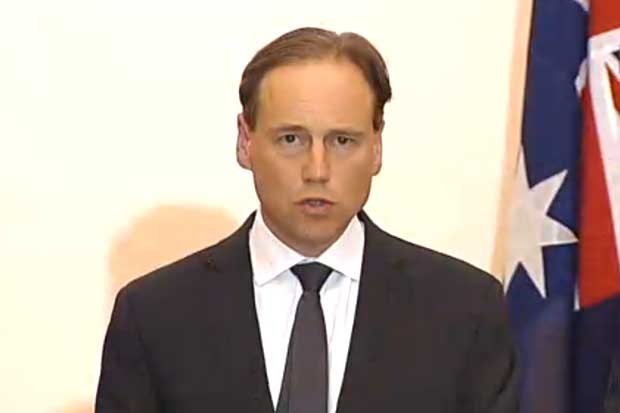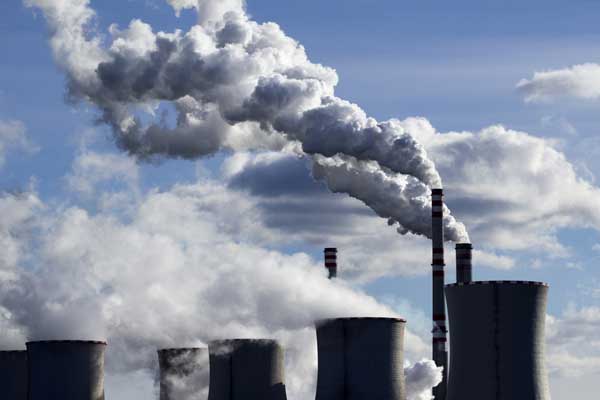Environment Minister Greg Hunt is doing a stellar job of muddying the rising, warming waters which threaten to submerge the government’s “inadequate” climate policies, but experts say his claims are “quite outrageously misleading”.
After half a decade of rhetoric the government’s Emissions Reduction Fund (ERF), the centre-piece of its ‘Direct Action’ climate policy, has faced its first real test.
The initial round of ‘reverse auctions’, which involve paying polluters to reduce emissions, was held on Thursday and Hunt has made quite a show of planting the LNP flag in the dead body of Labor’s carbon tax.
Hunt’s most compelling claim is that Labor’s carbon tax “reduced emissions at over $1,300 per tonne [while]the Emissions Reduction Fund auction price averages $13.95 per tonne”.
“That’s right, Labor’s failed carbon tax was more than 93 times more expensive,” Hunt said.
All three of the experts New Matilda put this claim to dismissed it as “nonsense”.
“The most important thing to get straight in terms of misinformation and misleading comments there yesterday was Minister Hunt’s assertion that the carbon price was $1,300 per tonne,” Professor Frank Jotzo said.
“That’s about as wrong as you can possibly get it,” he said.
The real price was in the 20-odd dollar range, and if the carbon tax had been allowed to develop into an emissions trading scheme, which it would’ve by now, the price would be linked to the European system which is trading at around the $10 mark.

Hunt’s other glaring omission is that while the Coalition’s policy is a cost, the carbon tax raised revenue.
“Now you have taxpayers’ money being used to pay for emission reductions rather than money coming in to the federal budget from emissions and you have a government that makes you want to forget that taxes need to be raised or other government spending cut,” Professor Jotzo said.
As John Connor, the CEO of the Climate Institute, put it, Hunt’s price comparisons are like “comparing apples and fridges”.
Gujji Muthuswamy from Monash University chose the more conventional “apples and oranges,” but you get the point.
What the government has actually done is spend $660 million of taxpayers’ funds buying 47 million tonnes of carbon abatement.
In contrast, Professor Jotzo’s Australian National University study on the emissions reductions directly attributable to the carbon price in the electricity sector alone found that it had achieved an abatement of between 11 and 17 million tonnes over its two year life, while raising around $6 billion in revenue.
The Climate Institute had estimated that the carbon tax – which would already be a fully-fledged emissions trading scheme – would have achieved something in the order of a 15 per cent emissions reduction by 2020.
Under the ERF, there’s no guarantee the government will even make the five per cent reduction on 2000 emissions levels it has committed to achieving by 2020.
The Climate Change Authority – which was set up to advise the government on emissions reductions targets – has suggested a 19 per cent reduction by 2020 is necessary.
But according to Connor, under the ERF “there’s no independent modelling which shows that we can achieve even what is an inadequate and increasingly irrelevant [five per cent]target”.
Minister Hunt claims the government will “easily” achieve the target, but few experts agree.
To start with, the government has just spent roughly a quarter of the $2.55 billion it has said it’s willing to spend on the ERF but, at 47 million tonnes, it’s only bought around 15 per cent of the abatement needed to meet the five per cent target.
There’s also no guarantee the contracts companies won in Thursday’s ‘reverse auction’ will be discharged before the 2020 deadline. Many of them extend for seven or 10 years, and the government has not provided information about when the abatements need to be achieved.
“The experience with grant-based mechanisms is some of the projects proposed or actually contracted don’t happen in actual fact,” Professor Jotzo said.
Even if they do, the types of projects contracted so far are largely land-fill and agriculture abatements, many of which may have been occurring already under ‘carbon farming’ initiatives, or would have occurred anyway.
While the regulator will try, there’s also no guaranteeing baselines won’t be inflated to make abatements seem more significant than they actually are.
Perhaps most importantly, the policy provides for only patchy, one-off cuts to emissions.
“The benefit and effect of the previous laws,” Connor said, “was they were a cap on pollution for over 60 per cent of the economy”. A policy which reached most of the economy, of course, helped drive economy-wide innovation.
Under the ERF, Professor Jotzo said, “there’s no trickle down effect for the economy” whereas under “emissions trading schemes or carbon taxes, prices change right through the economy”.

Essentially, high-carbon products and services go up in price, making low-carbon products and services more attractive to consumers, and eventually a new, de-carbonised equilibrium emerges.
Consequently, unlike Labor’s carbon tax and emissions trading scheme policy, a grant-based system is a relatively easy political sell.
“Because there’s a list of things that are contracted to be done,” Professor Jotzo said, “it can be made to look very concrete”.
“Whereas the impact of a broad-based policy such as a carbon trading measure is much more fundamental and much more long-lasting.”
In fact, rather than driving economy-wide change, the ERF is liable to become ever more expensive, because the government has not included the promised ‘safeguard mechanism’ which was key to the policy’s viability.
The ‘safeguard’ was designed to prevent big emitters like heavy industry and electricity generators from cancelling out the emissions the government intends to buy by increasing their own.
A discussion paper on the ‘safeguard’ which the government released in March effectively removed it, meaning there’s now no ‘carbon cap’. As it stands, big polluters could either continue ‘business as usual’, or in all probability increase their emissions over time and undermine any reductions made by the ERF.
Similarly, a recent Energy White Paper failed to link climate and energy policy, relied on modelling not consistent with the global goal of limiting temperature rises to two degrees, and revealed the government is taking a ‘technology neutral’ approach.
Incidentally, if the government had left the Renewable Energy Target – essentially a subsidy, and therefore not ‘technology neutral’ – as it was legislated, it would have resulted in around seven per cent more electricity being generated from renewable sources.
And the experts New Matilda spoke to are not confident the ERF won’t go, at least in part, the same way as the RET.
“There’s a general belt tightening going on and there’s no reason why [the ERF]wouldn’t come under the same belt tightening as other projects,” Muthuswamy said.
Connor agreed, but said Australia would have to do much more belt tightening if we didn’t develop a serious, stable climate policy soon.
“I think what’s important is we’ve seen more than half a decade of rhetoric and the government’s policy finally hits reality and there’s no confidence for anyone,” Connor said.
“After the auction, the safeguard mechanism, and the Energy White Paper there’s no confidence for anyone that we have a credible climate policy on the books right now.”
Donate To New Matilda
New Matilda is a small, independent media outlet. We survive through reader contributions, and never losing a lawsuit. If you got something from this article, giving something back helps us to continue speaking truth to power. Every little bit counts.



